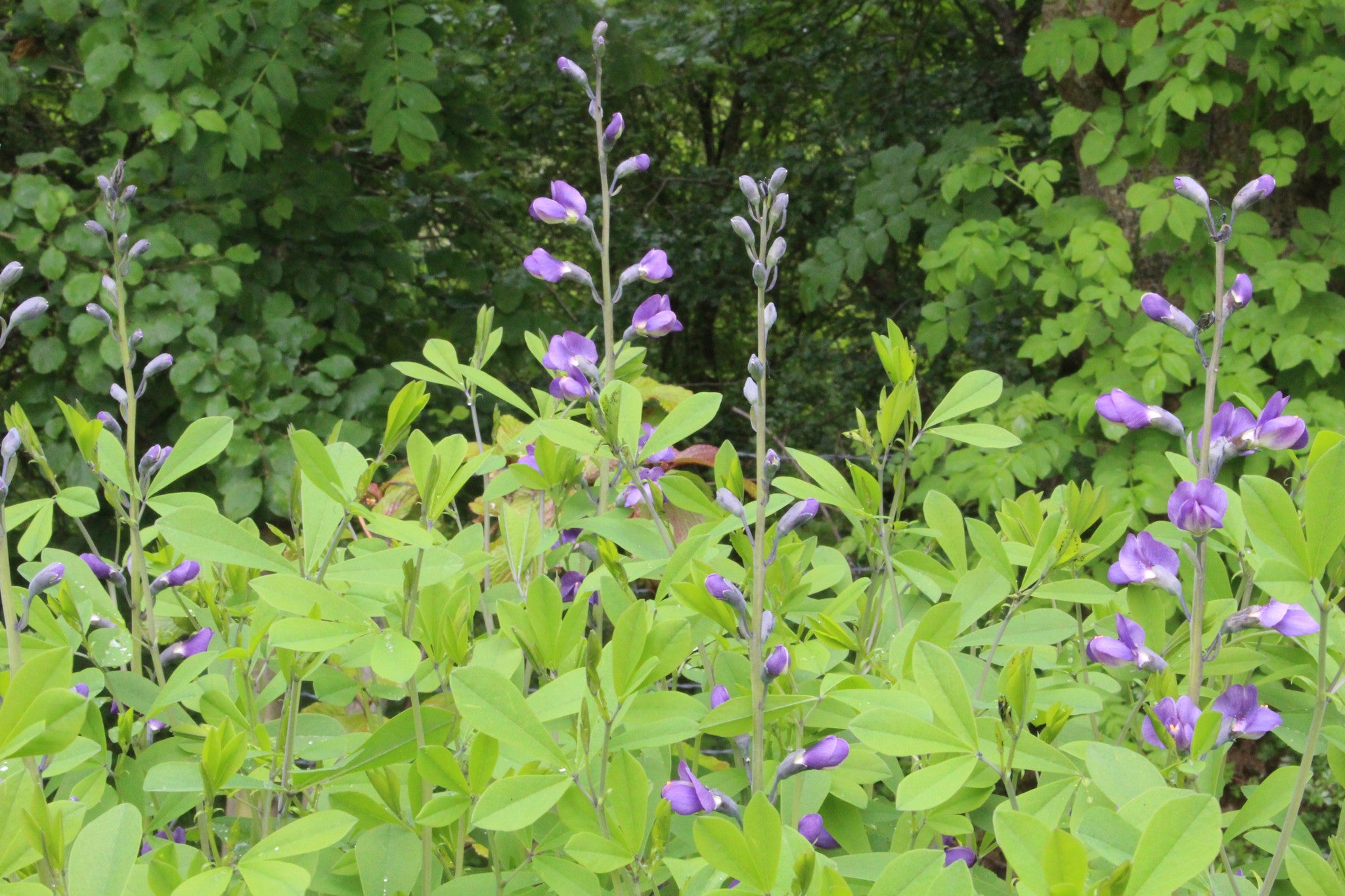Baptisia 'Purple Smoke'
Approx. 0.5 litre pot
About this cultivar:
Baptisia 'Purple Smoke' was first discovered in 1996 by Rob Gardener of the North Carolina Botanical Gardens. Apparently a chance hybrid of B. australis and B. alba, this has the charcoal-gray stems of alba and the blue-ish colour flowers from australe, although it is more purple than B. australe.
- Position: Full sun, Partial shade
- Soil: Almost any soil - grows well in Ballyrobert!
- Flowers: June, July
- Other features: -
- Hardiness: Fully hardy - grows well in Ballyrobert!
- Habit: Clump forming
- Foliage: Deciduous
- Height: 105 - 135 cm (3.5 - 4.5 ft)
- Spread: 90 - 150 cm (3 - 5 ft)
- Time to full growth: 2 to 5 years
- Plant type: Herbaceous Perennial
- Colour: Purple, blue, green
- Goes well with: -
About this genus:
Baptisia is a genus in the legume family, Fabaceae. There are around 20 species of Baptisia, all native to North America. They are flowering herbaceous perennial plants with pea-like flowers in spring on impressive upright racemes (flower spikes with a short stem attaching each flower to the main stalk) of blue, white or yellow flowers. The flowers are followed by pods, which are sometimes inflated. They can look a bit like Lupins. The most common species, B. alba and B. australis, grow to 3-4 feet tall whilst some species grow no more than 1- 2 feet tall.
The name of the genus is derived from the Ancient Greek word bapto, meaning "to dip" or "immerse". Additional common names of this plant exist, such as indigo weed, rattleweed, rattlebush and horsefly weed. The common name "blue false indigo" is derived from it being used as a substitute for the superior dye-producing plant Indigofera tinctoria. Some Indian tribes used it for medicinal purposes. The Osage made eyewash from the plant. The Cherokees would make a tea from it. A hot tea was taken as a purgative and a cold tea to prevent vomiting. A pulverized root or hot tea was held over a sore tooth to relieve the pain. Indian children would use the dried pods with the loose seeds inside as rattles. It should be noted however, that most parts of the plant are now considered mildly poisonous!
Baptisias are excellent, easy to grow, attractive, low-maintenance plants. They like the usual full-sun to part-shade and almost any soil that isn't waterlogged. They are also drought tolerant. In the garden Baptisia provides a spiky architectural form, especially as they emerge, that mirrors Lupins. They often serve as a focal point in spring, then as a space filler during the summer. To enjoy the seed pod appearance and structure, don’t trim the old bloom spikes back after flowering. Wait to cut back old foliage in late winter or early spring to enjoy autumn and winter effects.
Combination plants can include lower going genus such as Artemisia or Veronica. Some people find the silver foliage of the Artemisia compliments the blue in the Baptisia foliage. Baptisia also make a perfect companion for early spring flowering bulbs, as they can be timed so that their stalks emerge just after the bulbs have finished. Baptisias develop such a thick canopy of foliage that it would be hard to achieve a simultaneous display of bulbs and Baptisia in the same space, but as succession planting, they are hard to beat.
Or just use if you are bored with Lupins and want something that gets a bit shrubbier!


